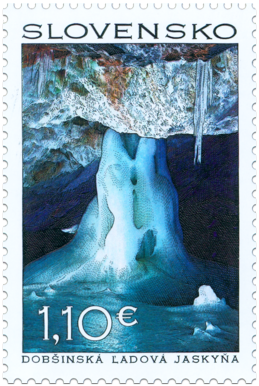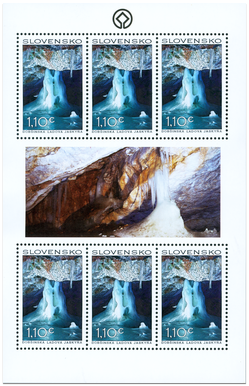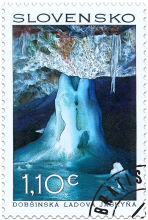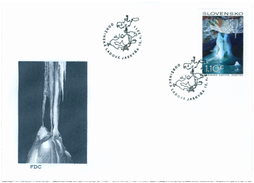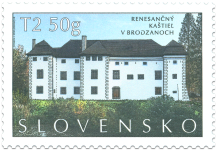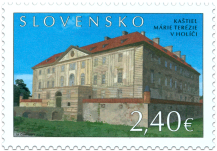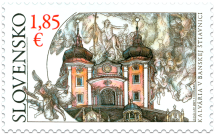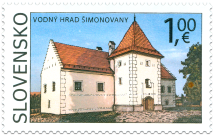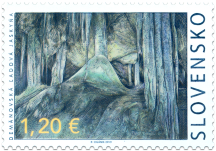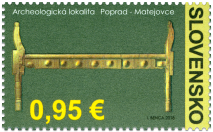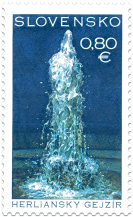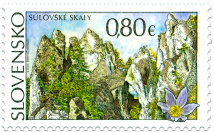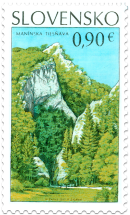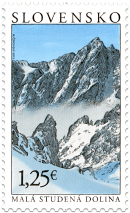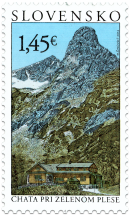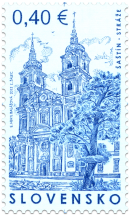495 Date of issue
15.04.2011 Face value
1.10 € Sell price
1.10 €
Dobšinská Ice Cave is located in the Slovak Paradise National Park in the Spiš-Gemer karst, in the cadastre of municipality Dobšiná. Cave entrance is on the northern slope of the Duča Hill at elevation of 969 m, near the village named Dobšinská Ľadová Jaskyňa. It was discovered on June 15, 1870 by Eugen Ruffiny accompanied by Gustáv Lang and Andrej Mega.
The cave was formed as a part of bigger complex, the so-called Stratenská Nappe, by the river Hnilec in the Middle Triassic pale Steinalm and Wetterstein limestones, along the tectonic faults and interbed surfaces. Dobšinská Ice Cave was formed approximately 400 thousand years ago, when the massive collapse separated it from this system. The cave obtained sack-like character with stagnation of cold air, enabling natural glaciations of the underground space. Ice fill occurs in the form of floor ice, icefalls, ice stalagmites and columns. The ice volume reaches 110,100 m3. The cave reaches the length of 1,388 m, of these 495 m are accessible for the public.
The main part of the cave is the Great Hall. It is 72 m long, 36 - 42 m wide and 9 – 11 m high. The hall contains large quantities of floor ice, which is almost 27 m thick. Dominant feature of the Great Hall and, at the same time, the symbol of the cave is a hollow ice stalagnate called Studňa (Well). Between 1891 and 1946, it was used for occasional skating for public.
The cave stands for the most important wintering place of various bat species. The most frequently occurring are the Whiskered Bat (Myotis mystacinus) and Brandt’s Bat (Myotis brandtii).
The cave has been open since 1871. It was first experimentally electrically lit on July 10, 1881, then occasionally until 1887 and since 1887 it has been lit permanently. Dobšinská Ice Cave is among the largest and most important ice caves in the world; in 2000 it became the part of the World Cultural and Natural Heritage UNESCO.
FDC shows one of the many stalagnates occurring in Dobšinská Ice Cave.
Ľubomír Očkaik
State Nature Protection of the Slovak Republic, Slovak Caves Administration
© 2024 POFIS - Postal philatelic service. All rights reserved

